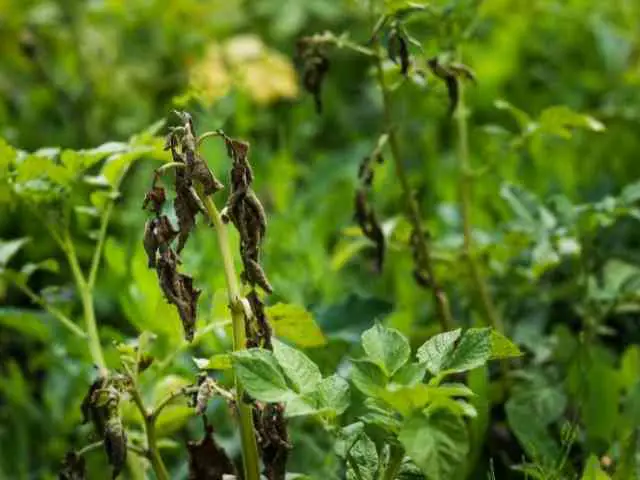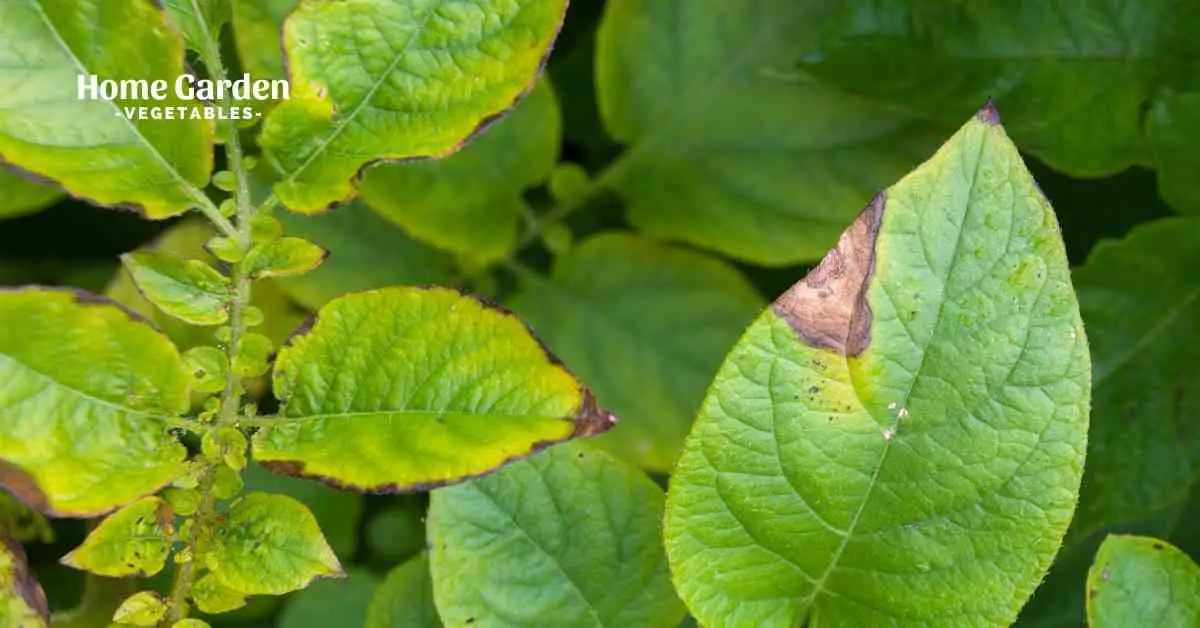Potato blight is among the worst enemies that gardeners have to fight with each year. This fungal disease can be destructive in potato fields. The worst part is that once the disease appears, there’s no way of eliminating it. However, there are certain steps that gardeners can take to prevent it from occurring, or slow down its progress if it has already hit the crop. What does blight look like on potatoes anyway? Continue reading and you’ll learn all about the symptoms, prevention, and management of the disease.

What Conditions Favor Potato Blight?
Warm humid days around the time potatoes approach harvest are especially critical for the crop. Wet, warm weather promotes the spread of the disease, which is why gardeners need to be extra cautious during this time. The first signs of blight usually appear around late summers when the weather is most favorable. In most climates, this happens around August.
Reader Poll: What online courses would interest you?
If you’re planning on harvesting new potatoes, which are ready in around 2 weeks after the flowers appear, blight isn’t that big of a problem. However, if you want to harvest fully-developed, big tubers for storing over the winters, keep a close check on the crop as soon as the weather starts getting warm and moist.
What Does Blight Look Like On Potatoes?
The first signs of the disease appear on the potato blossoms. Blackish brown spots on flowers and leaves, growing from the tip of the leaves and moving towards the center are symptoms of potato blight. White spores are often present on the underside of the infected leaves. Eventually, the affected leaves shrivel and turn brown. Brown spots may also appear on the stems.
Subscribe to our newsletter!
If the disease is not managed, the fungal spores are released into the wind, seep into the soil and attack the tubers. The affected tubers remain firm at first, developing a reddish-brown decay just below the skin. Eventually, the decay is attacked by bacteria and turns into soft rot. Although the symptoms may not appear on tubers in the early stages, the infected tubers are likely to rot in storage.
How To Prevent Potato Blight
Now that you know what potato blight looks like and how damaging it can be, you’re probably wondering if it can be prevented from occurring in the first place. Fortunately, there are several things you can do to avoid potato blight from hitting your crop in the first place. Here are some simple prevention steps:
- Plant Resistant Varieties
Look for blight-resistant potato varieties, especially if you have a history of blight infections in the garden. Sarpo Mira and Valor are some blight-resistant maincrop potatoes you can consider growing. Also, choosing early potatoes is also a good strategy to avoid the late summer weather when blight is most likely to occur. Early potatoes will typically come to harvest before the weather turns suitable for the disease.
- Rotate Crops
Don’t plant potatoes or other solanaceous crops in the same spot you did last season. Re-planting crops from the same family in the same spot year after year favors the building up of fungal spores in the soil and increase the chances of the disease occurring in your potato crops. Instead, rotate the planting spot for potatoes such that you don’t plant them in a spot for at least 4 years in a row.
- Maintain Good Aeration
Choose a spot that’s not shaded by taller plants and can allow sufficient aeration among the potato plants. At the same time, plant individual plants 12 to 15 inches apart in rows spaced at least 3 feet apart so there’s enough room for air among the plants. Good aeration allows moisture to dry quickly on the plants, reducing the chances of blight.
- Preventive Fungicides
Preventive fungicides are also available that you can apply to the soil before planting the potatoes. These fungicides kill any fungal spores that are present in the soil, reducing the chances of diseases in the next season’s crop.
Managing Potato Blight
Once potato blight starts showing symptoms, there are ways in which gardeners can retard its spread. Slowing down the disease gives enough time for the spuds to develop and be harvested before the disease reaches them.
- Copper-based Fungicides
Weekly application of copper-based fungicide can slow down the spread of blight. Apply the fungicide according to the instructions. In areas where blight is prevalent, preventive applications of these fungicides, before visible symptoms, are also possible.
- Earthing Up
Potatoes exposed above the soil are most susceptible to being affected. If the crop shows signs of the disease, earthing up potatoes reduces the chances of the disease spreading to the tubers.
- Harvest Early
For blight-infected crops, harvesting potatoes early reduces the chances of blight infection in the tubers. Also, use these tubers as soon as possible. Check them regularly for any signs of decay when kept in storage and discard the tubers that start rotting.
- Clean The Soil
After harvesting the potatoes, clean the garden bed, removing and throwing away all plant debris and any potatoes left in the soil. Cleaning the soil reduces the chances of the disease reappearing the next spring.
Conclusion
What does blight look like on potatoes? Now you know the symptoms to watch out for and also the preventive and control measures you can take to keep your crop safe until harvest. Don’t let blight take hold of the crop you’ve spent so much time and effort growing. Follow the tips above and you’ll be able to harvest some fresh, delicious homegrown potatoes this summer!

